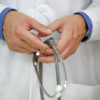Does PMS exist?
Each month before your period you may have realised that you seem to change as a person for a few days, and then as your period starts you begin to feel better. A couple of weeks pass and the unpleasant feelings recur. At some stage you may have asked yourself ” Do I have PMS?” and “what can I do about it?”
What is PMS?
PMS or PMT is a condition in which symptoms commonly occur from 2 to 14 days before your period starts. However, most women complain of symptoms for about 7 days each month. There is similar condition known as Menstrual Distress Syndrome, in which some women experience symptoms all month, but find they are worse before heir period.
What are the symptoms of PMS?
Mood changes:
- Irritability
- Tension
- Aggression
- Depression
- Loss of self esteem
- Weepiness
- Sleep disturbance
Fluid retention:
- Bloating of the stomach
- Breast swelling and soreness
- Swelling of the ankles, hands and face
Physical symptoms:
- Headaches
- Pains- in the legs, arms, back etc
- Nausea
- Food Cravings
- Binge eating and other symptoms
What causes PMS?
Unfortunately the cause of PMS is at present unknown. Many theories have been developed to explain PMS, but none have completely explained the cause. However we recognise it as a complex condition whether appears to be some link between emotional, physical and hormonal factors.
What treatments are available?
PMS is very complex and no complete cure is available. However, many different types of treatments are currently being used. There are a number of treatments that your doctor may suggest and some of these are listed below. Most treatments used may help for up to 6 months but only few will benefit for longer than six months. Oestrogen therapy and the serotonin enhancing medicines are believed to be of longer benefit.
-
Hormones – Oestrogens, particularly oestradiol, the main oestrogen in the reproductive year, is taken in tablet form or is used as a patch. Progestogens have been used, particularly dydrogestrone. The oral contraceptive pill may also be suitable for the younger age groups.
-
Anti-prostaglandins – Anti-prostaglandins are used for painful periods, and they may also help with premenstrual pain. Two commonly used anti-prostaglandins are Ponstan and Naprogestic.
-
Serotonin enhancers – These medicines increase serotonin in the brain and help mood changes in particular. These medicines are also used for depression in the non-PMS sufferer.
-
Diuretics – Diuretics are used to help removed excess fluid, and may improve the symptoms of bloating and breast soreness.
-
Bromocriptine (Parlodel) – Bromocriptine is an anti-prolactin, i.e. a prolactin antidote. Bromocriptine may help when the major symptom is breast tenderness.
-
Natural therapies – Pyridoxine (vitamin B6) is often used in various doses, particularly if you have mood changes. Evening Primrose oil has been used to treat PMS too.
- Psychological counseling – Simply being able to discuss the symptoms and the stresses in your life with your doctor, counsellor or self-help group is often sufficient to enable you to cope. However, other more formal programs of counseling or therapy may be advised, for example a cognitive therapy program in which you may learn ways of coping better with your life and its stresses.
-
Diet and exercise – Improving your overall general health and fitness can help you to cope with the symptoms and to manage your life better. Increasing fibre, fresh vegetables, fruit and plenty if water as well as exercise particularly in the premenstrual phase may help to reduce the intensity of the symptoms.








